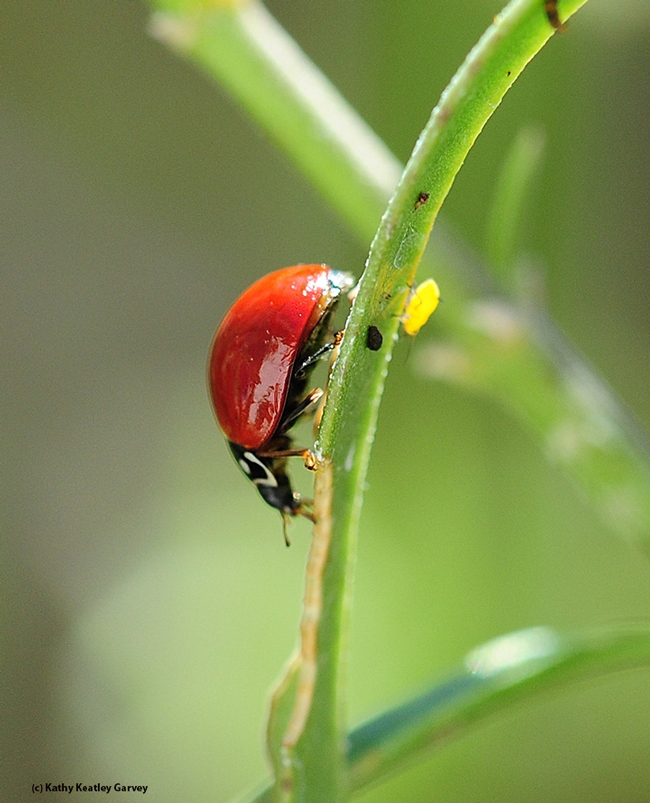The circle of life...
Monarch caterpillars feast on milkweed, their host plant. Oleander aphids feast on the juices of milkweed plants. Lady beetles, better known as ladybugs (but they're beetles, not bugs) feast on the aphids.
The milkweed is the only plant that the monarch caterpillars eat. Oleander aphids, as their name implies, are also commonly found on oleander. And lady beetles not only eat aphids, but soft-bodied insects such as scales, white files, mites, and yes, monarch butterfly eggs.
The UC Statewide Integrated Pest Management Program (UC IPM) says California has some 200 species of lady beetles and that "most are predators both as adults and larvae."
If you've ever watched a lady beetle go through the aphid cafeteria and select the menu (big, little, small, winged, wingless, fast, slow, near, far), it's quite a sight.
One lady beetle can eat 50 aphids a day, scientists say. During its lifetime, that can mean 5000 aphids.
As for the oleander aphids (Aphis nerii), they derive their name from Nerium, the genus name for oleander. Both are the oleander and oleander aphid are reportedly native to the Mediterranean region.
If you have milkweed, you probably have aphids. Oleander aphids. And you probably have lady beetles eating those aphids. And the monarch eggs...
The circle of life..
Attached Images:

